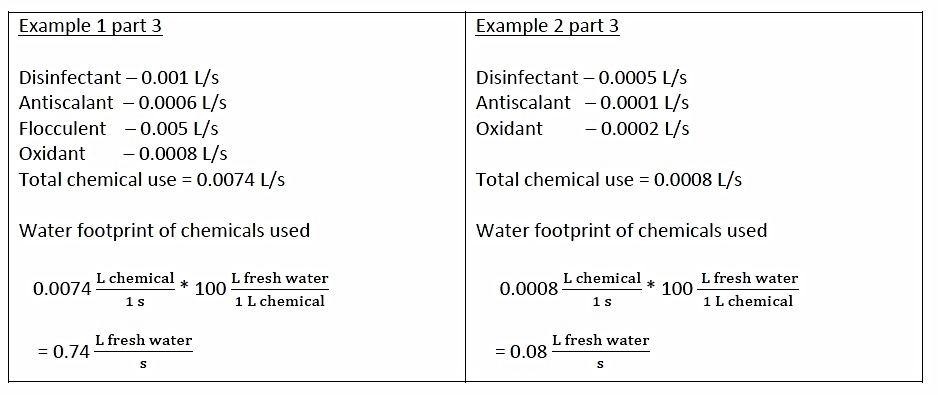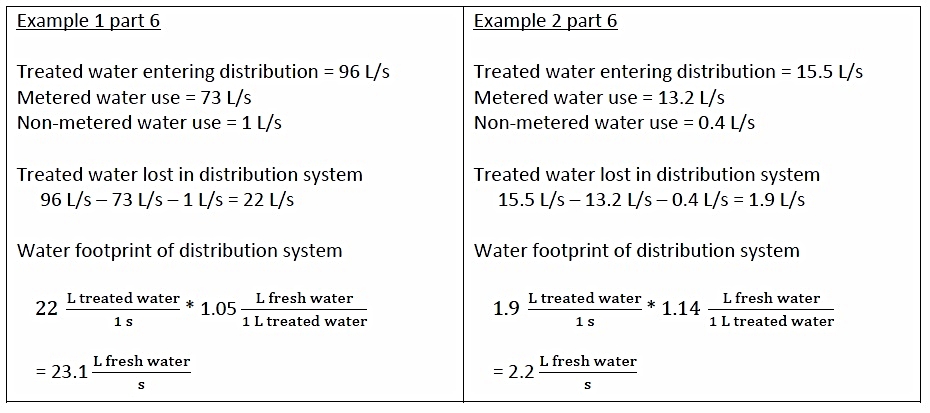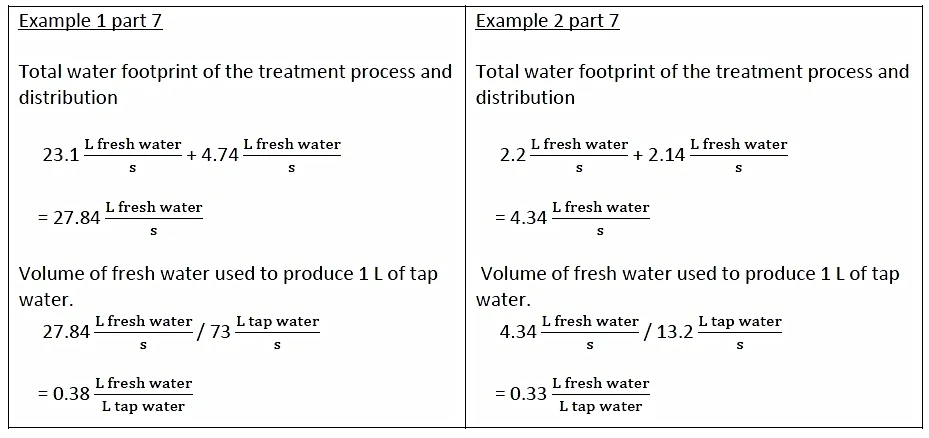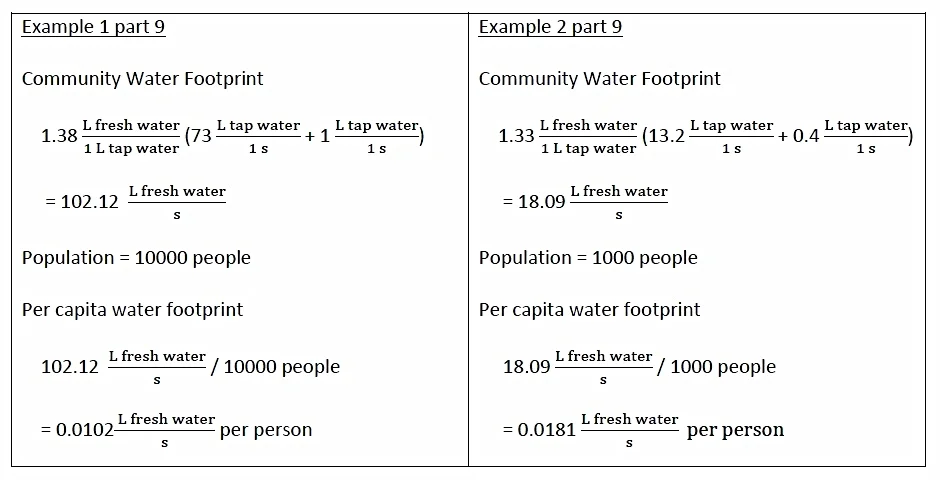Calculations: Calculating the Water Footprint of Your Local Drinking Water
The information that you gathered through your research can be used to calculate the water footprint of your local drinking water. Throughout this series of calculations we will be talking about the water footprints of both processes and products. For example, we will find the water footprints of both the water treatment process and the treated water itself. For the purposes of this project the difference between the two is that the water footprint of a process is the average amount of fresh water it uses per second and the water footprint of a product is the average amount of fresh water used to create that product.
The following section is a step by step description of the water footprint calculation. After each part of the description there are two examples of how to do that step. These two examples continue down in two columns. Throughout these calculations we will always round to two places after the decimal.
In the most strict sense the amount of raw water being brought into the facility will be in units of [volume of fresh water/time] and the amount of water entering the distribution system from the facility will be in units of [volume of treated water/time]. As stated earlier, volume should be measured in litres or cubic metres and time should be in weeks, days or seconds. Regardless of which of these units the information was given to you in the first step will be to convert them to litres per second.
Subtracting the amount of water entering distribution from the amount of water entering the treatment facility will give you the amount of fresh water used per second during the treatment process. In some cases this water can be used and returned to the source relatively unchanged but in other situations the water used must be treated as wastewater. If it must be treated as wastewater then the effective amount of fresh water used doubles because of the water needed for this additional process.
The second component of the water footprint of the water treatment process comes from the chemicals used. You should have the amounts of chemicals used in units of volume/time and the first step will be to convert them to L/s. These amounts can then be summed to find the total volume of chemical used per second during treatment. Next, the conversion factor of 100L fresh water per 1L chemical will be used to calculate the water footprint of the chemicals used.
The water footprint of the treatment process can be found simply by adding the water footprint of the chemicals used with the amount of the water used during treatment. We can use this value to calculate the amount of fresh water used per litre of treated water produced by dividing it by the volume of treated water sent to the distribution system per second.
The water footprint of one litre of treated water as it enters distribution is found by adding that litre itself to the amount of fresh water used to get it there.
Next, you will look at the water footprint of the distribution system. The estimated amount of water consumed by legitimate non-metered sources and the metered water use can both be subtracted from the amount of treated water that the treatment facility puts into the distribution system to find the amount of water that is being lost somewhere along the way. This value will be in units of litres of treated water per second. To find the water footprint of the distribution system you will first have to convert this into units of litres of fresh water per second by multiplying it by the fresh water/treated water conversion factor you found in the previous step.
This value (the water footprint of the distribution system) can be added to the water footprint of the treatment process to get the total water footprint of the distribution and treatment processes. Finally, this total process water footprint can be divided by the metered water use to find the volume of fresh water used to bring each litre of tap water to the end user.
The water footprint of one litre of water from the tap is found by adding that litre itself to the amount of water used to get it there.
The water footprint of your community can be calculated by multiplying the water footprint of 1 L of tap water by the sum of the metered and non-metered water used. These values can also be expressed in per capita terms by dividing them by the population of the community.
Both the community water footprint and per capita water footprint values can be converted into units of L/day, L/week or L/year to really get a better idea of how much water is being used in your community.









